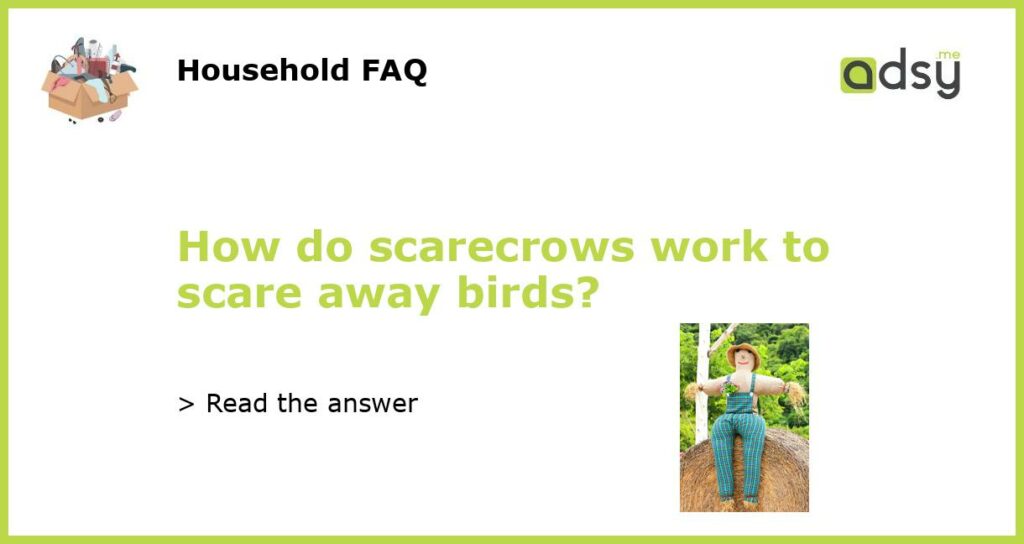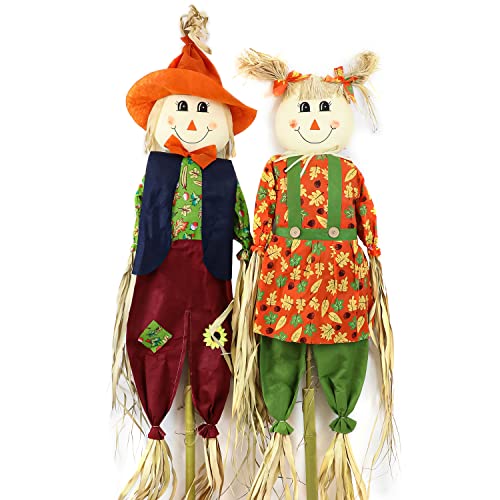Scarecrows: The Silent Guardians of Crops
Scarecrows have been an integral part of agriculture for centuries, serving as silent guardians protecting crops from birds. But how exactly do scarecrows work to scare away birds? Let’s delve into the fascinating mechanisms behind these straw-filled figures.
Visual Deterrence: Fooling the Fowl
One of the primary ways scarecrows work is through visual deterrence. Birds are naturally cautious creatures, constantly on the lookout for potential dangers. When they spot a scarecrow standing tall in the fields, they perceive it as a potential threat and are reluctant to approach.
Scarecrows are typically designed to mimic humans, tricking the birds into believing that a person is present. They usually consist of a wooden or metal frame covered with old clothing or burlap sacks. The construction of the scarecrow aims to create a lifelike shape and posture, fooling the fowl into perceiving a potential threat.
Noisemaking Tactics: Adding a Hint of Danger
In addition to visual deterrence, scarecrows often employ noisemaking tactics to further scare away birds. These noise-making devices serve to startle the birds and reinforce the idea that the area is unsafe and should be avoided.
Simple techniques like attaching tin cans and aluminum foil strips to the scarecrow’s frame can create noise when the wind blows, creating a menacing ambiance and dissuading birds from getting too close to the crops. Some scarecrows even incorporate compact disc recordings or electronic devices that emit predator calls to amplify the sense of danger.
Constant Movement: The Illusion of Vigilance
Scarecrows that incorporate movement are particularly effective at keeping birds at bay. Birds have sharp eyesight and can quickly identify static objects. By introducing motion, a scarecrow becomes more lifelike and deceptive to the feathered intruders.
The movement can be achieved in various ways, such as attaching strings or ropes to the scarecrow’s arms and legs which are then manipulated by the wind or manually. The subtle swaying or gesturing of the scarecrow gives the impression of constant vigilance, deterring birds from settling down near the crops.
Unpredictable Displays: Outsmarting the Birds
Scarecrows are no longer limited to the traditional straw-stuffed figures. Modern scarecrow designs have embraced technology to outsmart the birds with unpredictable displays. These high-tech scarecrows incorporate sensors and timers to create dynamic and unexpected movements, keeping the birds guessing.
For example, some scarecrows use motion sensors to detect the presence of birds and respond with sudden, jerky movements or unexpected bursts of sound from hidden speakers. These unpredictable displays heighten the scarecrow’s effectiveness, preventing the birds from adapting to a predictable pattern and ultimately driving them away from the crops.
Long-Term Preservation: Rotating Scarecrow Techniques
While scarecrows can be effective in deterring birds initially, their long-term effectiveness may diminish over time as birds adapt and become accustomed to their presence. To combat this adaptability, farmers often employ rotating scarecrow techniques.
Rather than having a single scarecrow in the field for extended periods, they periodically move or replace them with new scarecrows. This rotational approach ensures that the birds do not become familiar with a specific scarecrow and ultimately become desensitized to it.
In some cases, farmers may also vary the appearance of the scarecrows, changing their clothing or posture to create the illusion of a vigilant and diverse human presence. These subtle changes help maintain the scarecrow’s effectiveness in scaring away birds over extended periods.
In conclusion, scarecrows deter birds through visual deterrence, noisemaking tactics, constant movement, unpredictable displays, and rotating techniques. By combining these elements, scarecrows successfully protect crops from bird damage, allowing farmers to cultivate their fields in peace.






